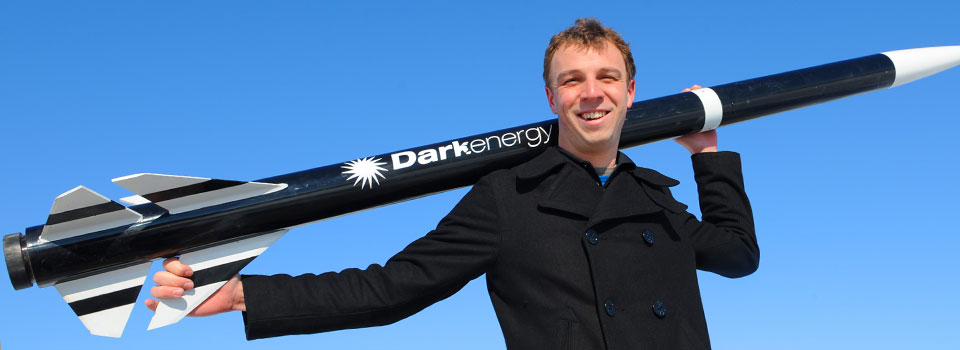Rocket man: One man’s passion for propulsion
Rocket man: One man’s passion for propulsion
| Author: | William Meiners |
|---|---|
| Magazine Section: | Our People, Our Culture |
| College or School: | CoE |
| Article Type: | Issue Feature |
A self-described “prop head,” Reese says he quickly gravitated from putting together model airplanes in the kitchen to constructing rockets in the garage.
“With rockets, you build the model and then you go fly it,” he says. “To me, that’s really cool. And there’s the fire, smoke and noise aspect of it. I love the shock waves, the loud roar and the bright flames.”
It’s also a love Reese enjoys sharing with others. His major professor, Steven Son, an associate professor of mechanical engineering with a courtesy appointment in aeronautics and astronautics, describes Reese as “a walking encyclopedia of knowledge about his passion on propulsion.”
As an undergraduate at the University of Southern California, Reese founded and became the four-year director of the USC Rocket Propulsion Laboratory. There he managed 40 fellow students through six projects involving large-scale model rockets.
In the wide-open California deserts, Reese and crew blasted rockets up to 65,000 feet into the atmosphere. In the more cluttered landscape of the Midwest, however, he once had to recover a rocket that rose more than 12,000 feet using an iPhone and the Google Earth application.
Reese says the pull to Purdue to work with faculty researchers within the Maurice J. Zucrow Laboratories was too much to resist. “Aerospace propellant technologies are the most energy-dense thing that mankind has ever created,” Reese says. “The space shuttle turbo pumps produce an enormous amount of power and they weigh almost nothing because they have to fly. The challenges of creating so much energy and directing it makes you feel like a modern-day Prometheus. You can really shape the flow of energy and use it for things.”
He’s also interested in helping shape young people's perceptions of science. “I consider myself very lucky that I found rockets and got excited about science, because it’s kept me going on this path to becoming an aeronautical engineer,” Reese says. “If I can share that with kids and inspire them in some way, that’s just a bonus.”
To that end, Reese has given presentations to local high school students at Central Catholic and Lafayette Jefferson. He’s also an active member of Indiana Rocketry, the state affiliate of the Tripoli Rocketry Association. The group has monthly launches from farmland about 30 minutes away from campus and participates in other outreach activities.
Rockets, though, are not all play for Reese. He defended his thesis in May and will begin a Ph.D. program at Purdue directly after that.
“David is always excited about everything he’s worked on,” says Son, who believes the sky is truly the limit for Reese. “When he first got here, he was working with an explosive project that was very tangential from his main interest, but he jumped right in on that.”
Son also credits Reese with developing a novel way to encapsulate particles into crystals, which translates to a faster-burning propellant that is simultaneously also more controlled. Just a “summer project” for Reese; a patent is forthcoming.
It’s all part of the explorer in Reese. “Science isn’t something stodgy,” he says. “Having a creative outlet like rocket propulsion has let me apply scientific theory to something that’s very real.”


Comments